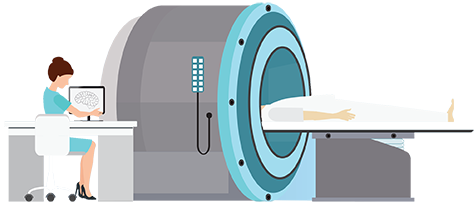

A Radiologist M.D. is a physician with a full medical degree and doctorate who diagnoses and treats diseases using radiologic technology. Often this is a process of correlating various type of radiographic findings with other examinations and tests. Radiologists have a very high level of knowledge about various medical imaging modalities and how to utilize findings from many in order to properly diagnose. The means of obtaining images are many; however, some of the more common include x-rays (both CT and fluoroscopy), nuclear medicine techniques, ultrasound, or MRI’s.
Radiologist Job Description
The following are some sample bullet points from a Radiologist job description:
Interested in learning or comparing job descriptions of different radiology jobs?
Radiologist Salary
On average, Radiologists make $361,538 annually in the United States. The salary of Radiologists is highly varied depending on your specialty and your geographic region. To learn more about it, take a look in depth at our Radiologist salary resource.
A Radiologists must start by completing a bachelors degree, which will take four years. Then, they must complete medical school, which usually takes another four years. After the formal education, you must complete a residency which can take several additional years. Many M.D.’s indicate that it should be expected to be in a learning mode for an average of 12 years. In addition, some Radiologists choose to subspecialize, which could add a few more years to the learning phase of their career. Becoming a Radiologist takes perseverance, focus, and a passion for what you are doing.If you want to be a Radiologist, here are some bachelors degrees that you should concider as the first step.
According the ASRT, the following is a list of sub-specialties that Radiologists can pursue:
The baby boomers are aging and the number of Radiologists in the United States is not adequate to deal with the demand for their professsional services. In some cases, Radiologists from India have been either flown in or teleconferenced into meetings to assist with specific cases. According to the ASRT, Radiologists have reported a significant increase in workload including hours worked per week, and the number of cases they are dealing with on a daily basis has dramatically increased. Because of the shortage, the new Radiologist Assistant position was formed. Radiologist Assistants can help perform many of the more complex procedures and can decrease the burden for the Radiologist M.D.’s To learn more, visit our Radiologist Assistant page.